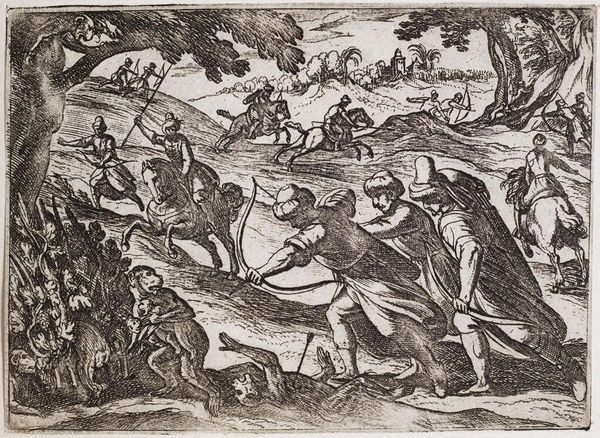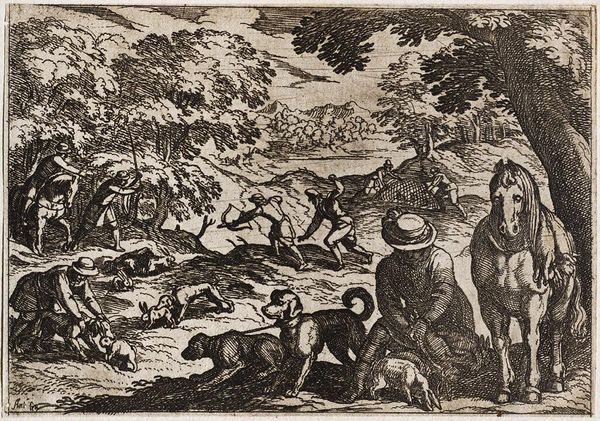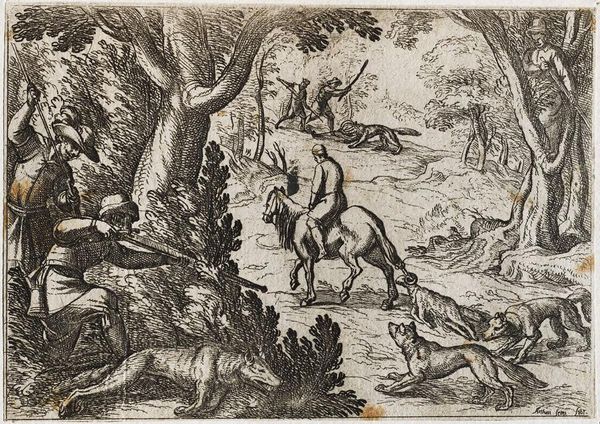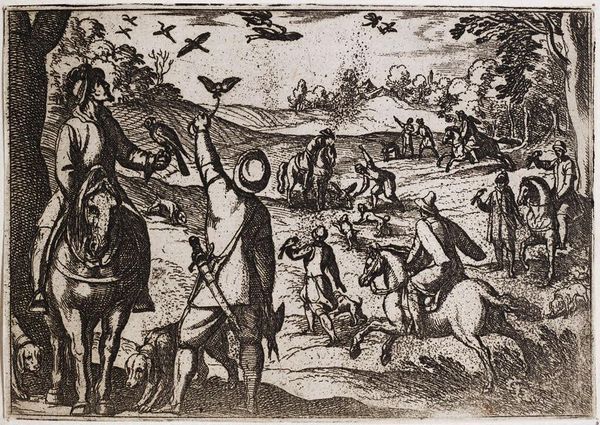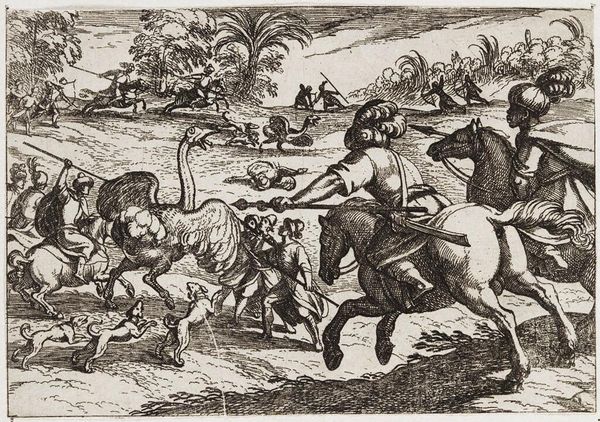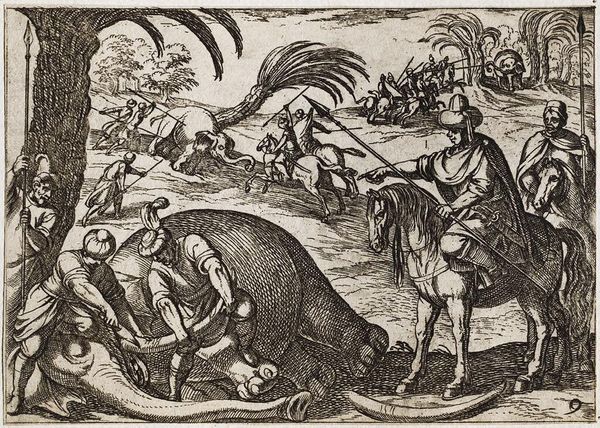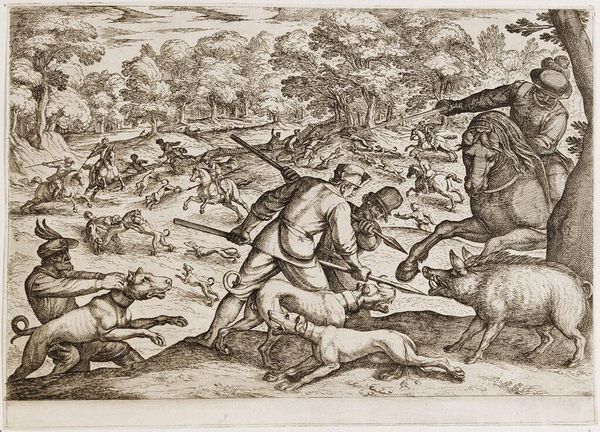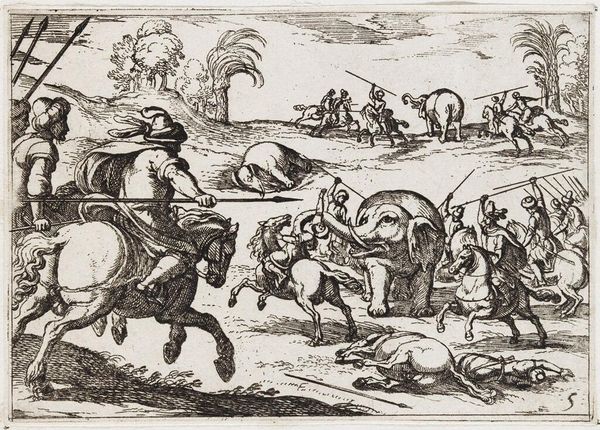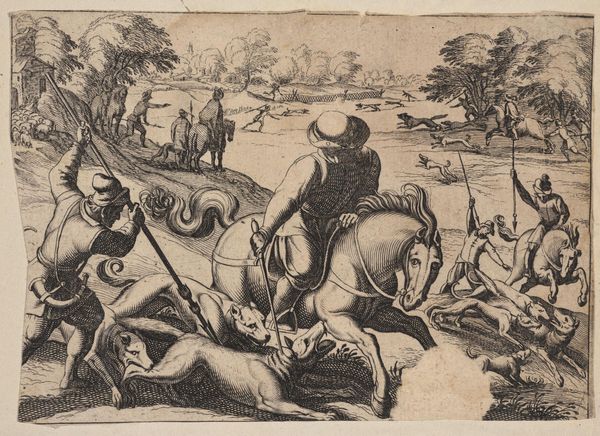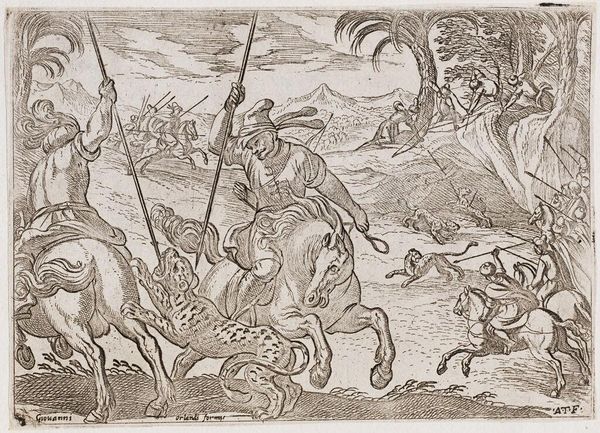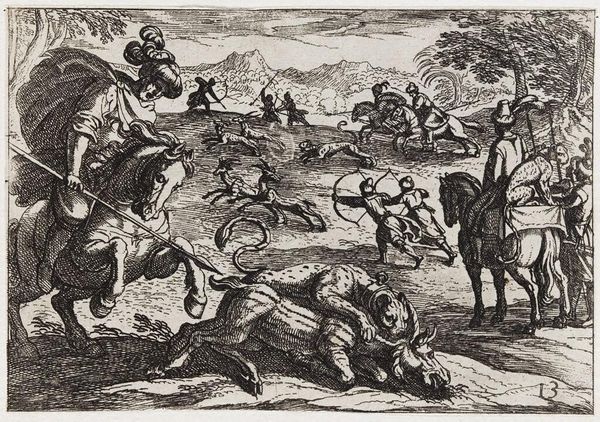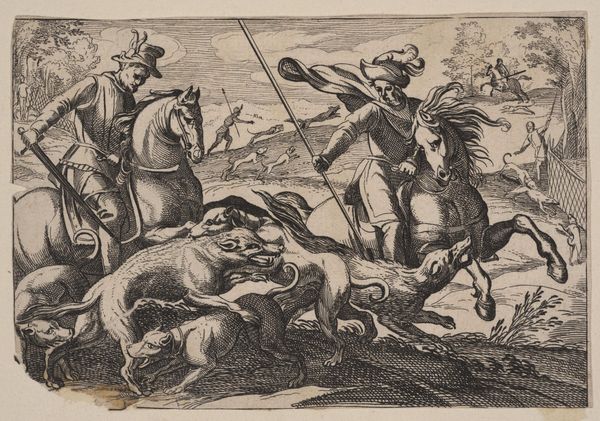
Copyright: CC0 1.0
Curator: Antonio Tempesta's etching, "A Wild Dog Hunt," captures quite a brutal scene. The frenetic energy jumps right off the page. Editor: It does; the composition itself feels violent, and the cross-hatching makes the hunt seem savage. This work speaks volumes about early modern attitudes towards nature and the subjugation of wildness. Where do we locate this piece within discourses of power, gender, and violence? Curator: We need to examine the economic context of printmaking at the time. Tempesta was a master of the etching needle. These prints were relatively inexpensive and accessible, so they were widely circulated. The labor involved in their production allowed these images to reach many people. Editor: I agree, thinking about the means of production is so important. And who exactly was consuming these images of domination? How did they reflect and reinforce societal hierarchies and gendered roles within the hunt itself? Curator: It's clear the hunt was a privilege, a leisure activity for the upper classes who could afford the horses, dogs, and weapons. Editor: Right, these prints served to glorify that lifestyle, normalizing the spectacle of violence and solidifying a certain social order. It speaks to the historical construction of masculinity and dominance over the natural world. Curator: I appreciate you making me consider this work beyond just its immediate aesthetic impact. Editor: And I am grateful to consider the materiality and the means through which these ideologies spread.
Comments
No comments
Be the first to comment and join the conversation on the ultimate creative platform.
